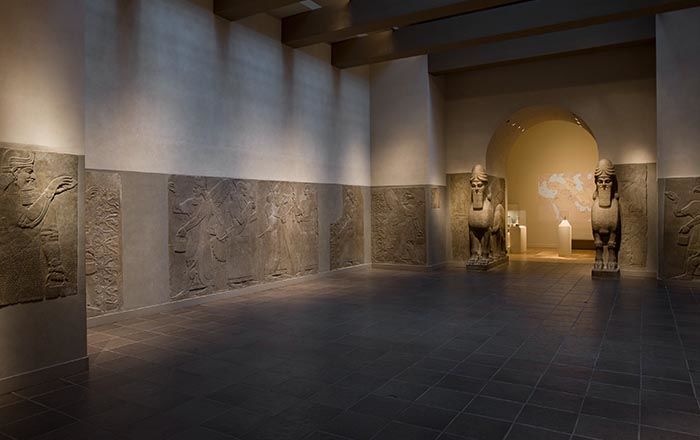Vase with Assyrian-inspired decoration
Not on view
Following the excavation of Assyrian palaces in the mid-nineteenth century, ancient Mesopotamian imagery began to be used in European decorative arts, including jewelry and ceramics. Publicity in the form of news coverage and popular books around the excavations, removal of many sculptures from sites in northern Iraq to England and France, and public spectacles such as the reconstructed ‘Nineveh Court’ in the Crystal Palace at Sydenham, London, fostered a fascination with Assyria and Assyrian art among the Victorian public.
This vase, made by the Ohio pottery of Samuel Weller, shows repeating figures loosely based on images of kings in the Assyrian reliefs divided by columns with Egyptian or Phoenician style lotus capitals. A winged disc, common to Assyrian and much other ancient West Asian art, among others, repeats below the rim of the vase. The king is holding a staff and wears a sword at his hip; in the original reliefs the king’s hand would be resting on the sword’s pommel.
This image cannot be enlarged, viewed at full screen, or downloaded.
This artwork is meant to be viewed from right to left. Scroll left to view more.



